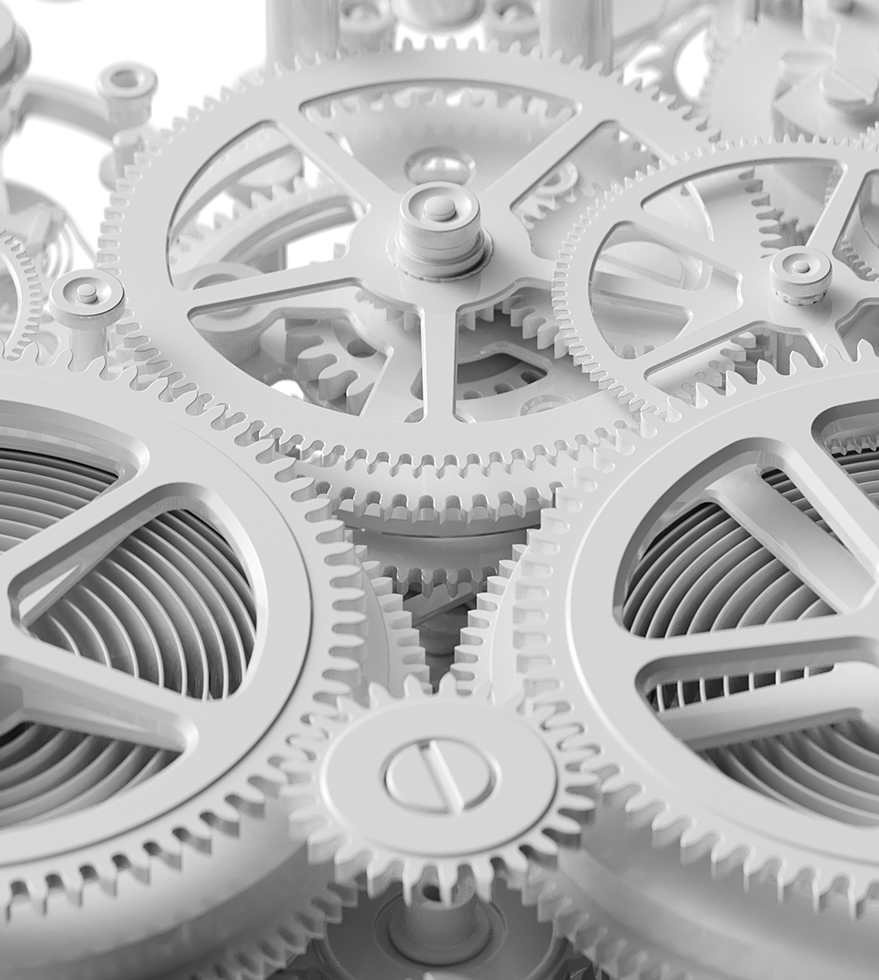TECHNICAL
INNOVATIONS
TECHNICAL
INNOVATIONS
OVERVIEW
Since its creation, LABAILS has pursued the objective of contributing to the history of fine watchmaking.
Through significant investments in research & development, the engineers and watchmakers working for the brand have succeeded in bringing ideas to fruition.
Discover them below.
ENERGY MANAGEMENT OPTIMIZATION SYSTEM
Using the concept of a planetary differential system, the exclusive innovation developed by LABAILS, EMOS, allows the user to manage how the energy is used in a multi-kinematic-chains architecture sharing the same energy source:
- In one mode (energy saving mode), the energy source is fully dedicated to the primary function. The other kinematic chains are inactivated; therefore, the corresponding functions cannot be used. The energy consumption is minimum.
- In other modes, the energy source continues to supply the primary function but also supplies secondary functions. The corresponding kinematic chains are running, allowing the user to use these functions. The energy consumption in this mode is higher. To avoid the risk of degrading the primary function, when the remaining power reserve of the primary function reaches a certain level, other kinematic chains are deactivated.
Offering such a system allows the user to optimize the power reserve of its watch with complications according to its use.
Our first model, Temerity, is equipped with this technology.

ENERGY MANAGEMENT OPTIMIZATION SYSTEM
Using the concept of a planetary differential system, the exclusive innovation developed by LABAILS, EMOS, allows the user to manage how the energy is used in a multi-kinematic-chains architecture sharing the same energy source:
- In one mode (energy saving mode), the energy source is fully dedicated to the primary function. The other kinematic chains are inactivated; therefore, the corresponding functions cannot be used. The energy consumption is minimum.
- In other modes, the energy source continues to supply the primary function but also supplies secondary functions. The corresponding kinematic chains are running, allowing the user to use these functions. The energy consumption in this mode is higher. To avoid the risk of degrading the primary function, when the remaining power reserve of the primary function reaches a certain level, other kinematic chains are deactivated.
Offering such a system allows the user to optimize the power reserve of its watch with complications according to its use.
Our first model, Temerity, is equipped with this technology.
ADAPTIVE POWER
RESERVE INDICATORS
Directly linked to the Energy Management Optimization System, the adaptive power reserve indicators track the energy consumption of several functions, dedicating one indicator for each.
The first one is dedicated to track the energy level of the primary function in real-time, whether in energy saving mode or not, meaning that this indicator will adapt its course depending of the use of the secondary functions.
The other ones are dedicated to the other modes and track the energy consumption of each kinematic chain independently. The scales depend on the amount of energy we decide to allocate to each function.
These power reserve indicators are powered by planetary differentials.
ADAPTIVE POWER
RESERVE INDICATORS
Directly linked to the Energy Management Optimization System, the adaptive power reserve indicators track the energy consumption of several functions, dedicating one indicator for each.
The first one is dedicated to track the energy level of the primary function in real-time, whether in energy saving mode or not, meaning that this indicator will adapt its course depending of the use of the secondary functions.
The other ones are dedicated to the other modes and track the energy consumption of each kinematic chain independently. The scales depend on the amount of energy we decide to allocate to each function.
These power reserve indicators are powered by planetary differentials.

